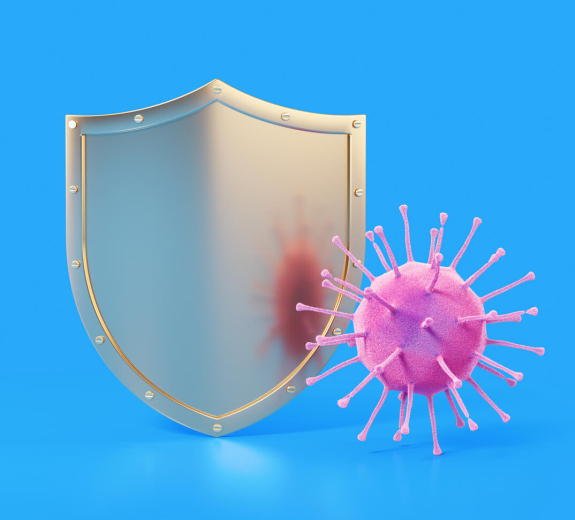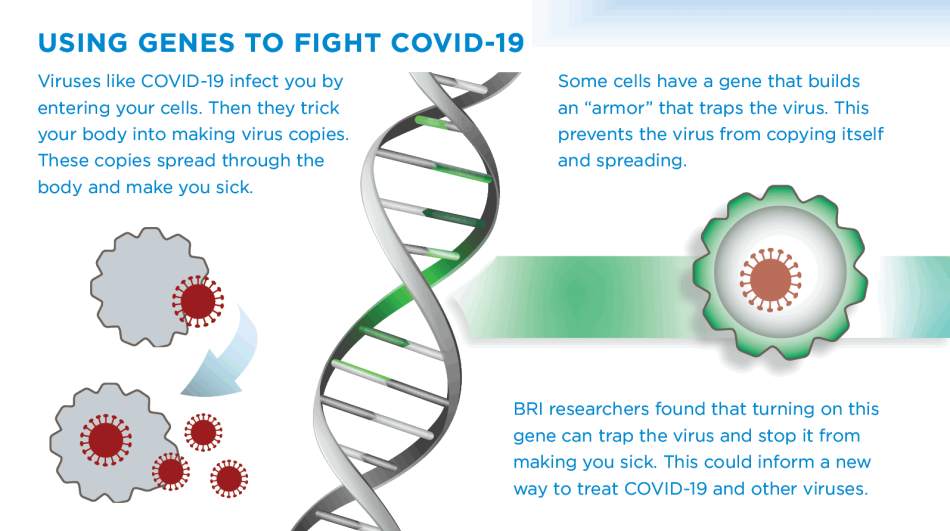Trapping the Virus in a Bubble
When the pandemic started, Dr. Lacy-Hulbert’s team wanted to see if an approach they’d found to curb other viruses might also work for COVID-19.
The researchers knew that viruses infect you by inserting their genetic code into your cells. Viruses then trick your body into making a bunch of virus copies, which enables them to travel through your body and make you sick. But our team learned that a handful of cells don’t get infected: Viruses enter these cells, but they have an armor-like coating that traps them inside.
“The virus basically gets trapped in a bubble,” Dr. Lacy-Hulbert says. “It can’t inject its genetic code or replicate. Eventually, your immune system clears those cells out and you never get sick.”
A Virus’ Achilles Heel
In the early 2010s, Dr. Lacy-Hulbert’s team developed a novel screening technique to study Ebola. They learned the deadly virus had an Achilles heel: A gene called MHC class II transactivator (CIITA).
They found CIITA is what enables some cells to trap the virus in the bubble and prevent infection: When the gene is turned on, it turns on another gene, which enables the protective armor. They later tried turning this gene on and exposing cells to SARS — and it also prevented SARS infections.
When the COVID-19 pandemic started, the research team was quick to launch a study examining if this new coronavirus shared the same Achilles heel.
“We found that the same genes protected cells against COVID-19,” Dr. Lacy-Hulbert says. “That’s really important, because it shows that the genes aren’t virus-specific — they make cells resistant to multiple viruses.”
The research team’s next steps are to run a more comprehensive screening, looking at millions of cells infected with COVID-19. They hope this will help them find additional genes that may help protect you from the virus.
“The more we know about how viruses infect cells — and the more we learn about how to block those infections — the better we’re equipped to fight this virus and others,” Dr. Lacy-Hulbert says. “We hope our insights will open up new avenues to help solve this pandemic and to treat viruses that impact people around the world.”





